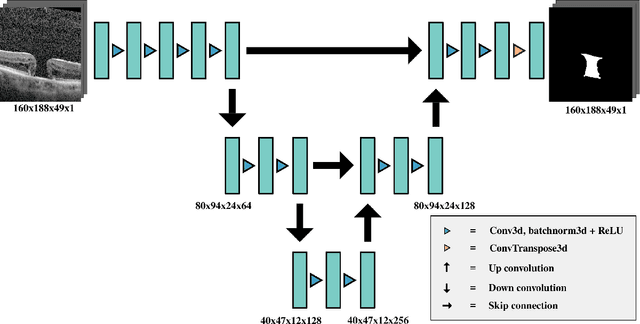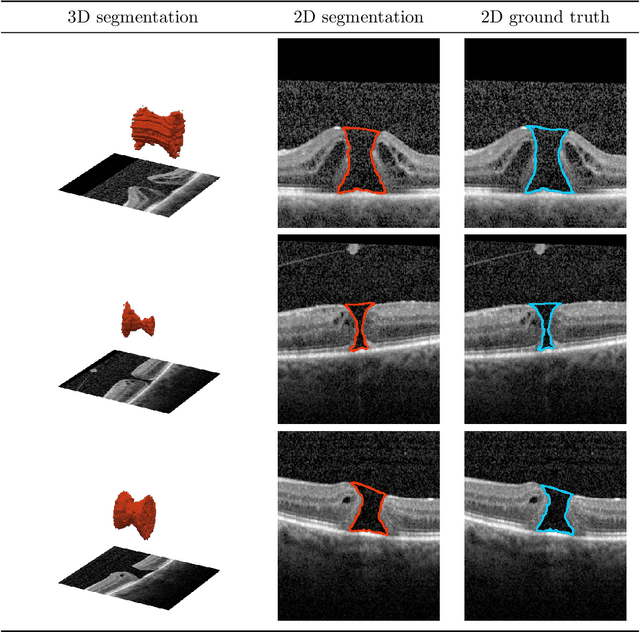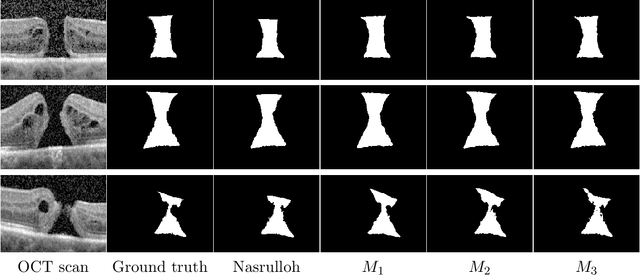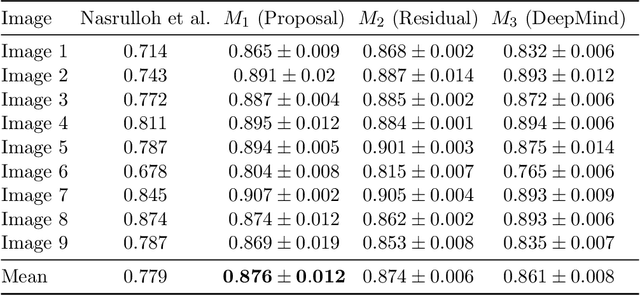Robust 3D U-Net Segmentation of Macular Holes
Paper and Code
Mar 01, 2021



Macular holes are a common eye condition which result in visual impairment. We look at the application of deep convolutional neural networks to the problem of macular hole segmentation. We use the 3D U-Net architecture as a basis and experiment with a number of design variants. Manually annotating and measuring macular holes is time consuming and error prone. Previous automated approaches to macular hole segmentation take minutes to segment a single 3D scan. Our proposed model generates significantly more accurate segmentations in less than a second. We found that an approach of architectural simplification, by greatly simplifying the network capacity and depth, exceeds both expert performance and state-of-the-art models such as residual 3D U-Nets.
 Add to Chrome
Add to Chrome Add to Firefox
Add to Firefox Add to Edge
Add to Edge